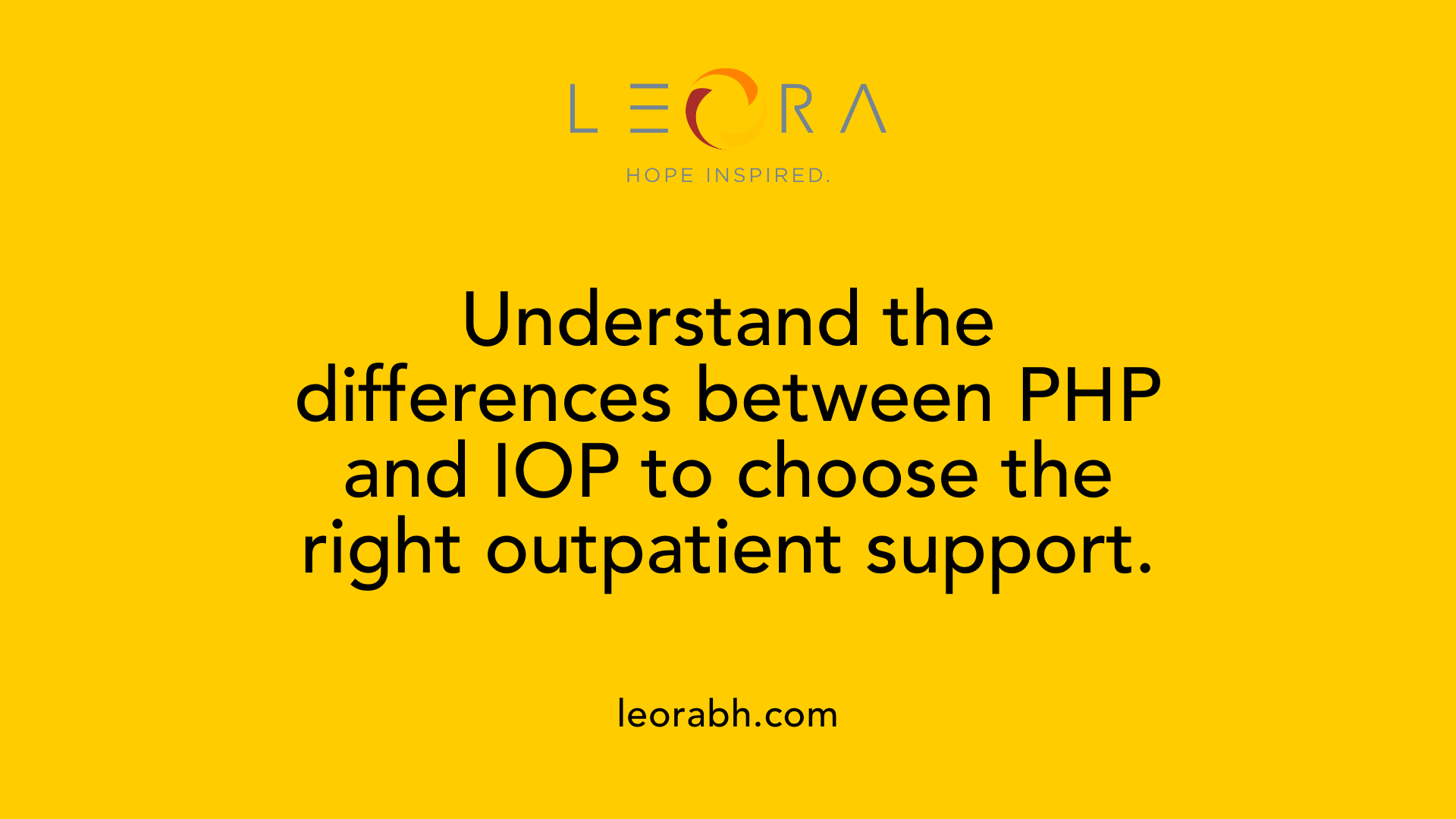How to transition from inpatient to outpatient addiction care
Smooth Pathways: A Guide to Transition from Inpatient to Outpatient Addiction Care
Understanding the Transition in Addiction Treatment
Transitioning from inpatient to outpatient addiction care is a critical component of the recovery journey. This process not only marks a move from a highly structured environment to a more autonomous setting but also is essential for sustaining long-term sobriety. An effective transition requires careful planning, coordinated care, and ongoing support to ensure individuals can apply skills learned during inpatient treatment in real-world situations. This guide explores the levels of care within addiction treatment, the differences between inpatient and outpatient services, and practical steps to facilitate a successful transition.
Understanding the Levels of Care in Addiction Treatment
 The continuum of care in addiction treatment encompasses various stages, from early intervention to intensive inpatient programs, designed to meet individuals at their specific needs. This progression allows for tailored treatment plans that adapt to recovery milestones and changing circumstances.
The continuum of care in addiction treatment encompasses various stages, from early intervention to intensive inpatient programs, designed to meet individuals at their specific needs. This progression allows for tailored treatment plans that adapt to recovery milestones and changing circumstances.
According to the American Society of Addiction Medicine (ASAM), these levels are clearly defined to ensure appropriate care intensity. The highest involves Level 4: Medically Managed Intensive Inpatient Care, suitable for severe cases requiring medical stabilization under 24-hour supervision.
Lower levels include Level 3: Residential or inpatient programs, typically lasting 30 to 90 days, providing round-the-clock support in a structured environment. As patients stabilize, they may transition to Level 2: Partial Hospitalization or Intensive Outpatient programs, which involve several hours of treatment daily but allow patients to live at home.
Finally, Level 1: Outpatient care, permits individuals to attend therapy sessions while maintaining their daily routines, ideal for mild to moderate cases or as follow-up care after inpatient treatment.
Transitioning between levels depends on continuous assessment and individual progress. For example, someone might move from inpatient to outpatient care once stabilized but still require ongoing support to prevent relapse.
| Level | Description | Typical Duration | Who It Helps | Additional Notes |
|---|---|---|---|---|
| Level 4 | Medically Managed Intensive Inpatient | Weeks to months | Severe substance use disorders, co-occurring health issues | 24/7 medical supervision |
| Level 3.7 | Withdrawal Management/Detox | Days to a couple of weeks | Patients experiencing withdrawal symptoms | Often hospital-based |
| Level 3 | Residential/Inpatient | 30-90 days | Significant addiction requiring controlled environment | Structured daily schedule |
| Level 2 | Partial Hospitalization / Intensive Outpatient | Several hours daily | Complex cases needing intensive therapy | Flexible living arrangements |
| Level 1 | Outpatient Care | <9 hours weekly | Mild to moderate disorders | Designed for ongoing recovery |
The decision to move between these stages hinges on assessed needs, progress, and stability, emphasizing personalized care approaches. Effective communication among care providers and ongoing evaluation ensure that individuals receive the appropriate level of support as they navigate their recovery journey.
Preparing for a Successful Transition: Planning and Support

How can individuals best plan and prepare for outpatient care after inpatient treatment?
Successfully transitioning from inpatient to outpatient care requires careful planning and a collaborative approach. Patients should work closely with their treatment team to create a customized discharge plan that clearly outlines treatment goals, scheduled appointments, and strategies to handle potential triggers.
Active involvement in education about the recovery process is essential. Patients should learn about the importance of ongoing therapy, medication management, and relapse prevention techniques. Understanding personal triggers—such as stress, negative emotions, or social situations—enables individuals to implement specific coping skills like mindfulness, journaling, or physical activity into their daily routines.
A supportive environment at home plays a crucial role. Engaging family members or support networks can provide encouragement and accountability. Setting clear boundaries and communicating needs helps in easing social and work-related reintegration.
Another critical aspect is establishing a consistent routine that includes regular therapy sessions, support group participation, and self-care practices. This consistency fosters stability and confidence during the transition.
Finally, maintaining open lines of communication with healthcare providers, attending scheduled follow-ups, and actively participating in outpatient services help in promptly addressing setbacks or emerging challenges, promoting sustained recovery.
Differentiating Outpatient Treatment Options & Levels of Support

What are the main outpatient treatment structures such as Partial Hospitalization Programs (PHP) and Intensive Outpatient Programs (IOP)?
Outpatient treatment in substance use disorder recovery primarily includes two structured programs: Partial Hospitalization Programs (PHP) and Intensive Outpatient Programs (IOP). PHP offers a middle ground between inpatient care and standard outpatient therapy, providing several hours of treatment each day without overnight stays. Typically, PHP involves attending treatment for 5 to 6 hours daily, 5 to 6 days a week, and is ideal for individuals needing significant support to stabilize early in recovery.
IOPs are less intensive but still provide substantial therapeutic engagement. Participants usually attend therapy sessions 3 to 5 days per week, for about 3 to 6 hours each day. This flexibility enables patients to maintain their employment, manage family responsibilities, and participate in community life while receiving ongoing support.
Both options include a variety of evidence-based therapies such as individual counseling, group therapy, medication-assisted treatment (MAT), and holistic approaches like mindfulness or yoga. The choice between PHP and IOP typically depends on the individual's current health, support system, and specific needs as assessed by the treatment team.
What are the benefits, scheduling, and therapy options within each level?
Partial Hospitalization Programs (PHP):
- Provide structured, intensive treatment during daytime hours
- Include therapy types such as cognitive behavioral therapy (CBT), dialectical behavior therapy (DBT), medication management, and holistic activities
- Serve as a bridge from inpatient care, helping clients apply skills learned in a real-world setting
- Usually last about 4 to 8 weeks, with the goal to transition to less intensive outpatient care
Intensive Outpatient Programs (IOP):
- Offer flexible scheduling, often 3-5 days a week for a few hours each day
- Focus on relapse prevention, life skills, coping strategies, and ongoing therapy
- Encourage family involvement and trauma-informed care
- Suitable for those who have stabilized but still require support to maintain sobriety
Both levels emphasize personalized treatment plans and frequently include family therapy, medication monitoring, and participation in support groups like AA or NA. They typically offer options for holistic and alternative therapies to support mental and emotional health.
What are the implications of choosing between less or more intensive outpatient programs?
Choosing between PHP and IOP depends on individual circumstances. PHP provides a higher level of supervision and structure, which can be critical immediately following inpatient detox or residential treatment. It ensures intensive therapeutic support for stabilization and relapse prevention.
IOPs, with their greater flexibility, are suitable for individuals who are either in the maintenance phase of recovery or have milder severity of substance use disorder. They enable continuous support while allowing patients to pursue employment, education, or family responsibilities.
The decision should factor in the person's motivation, social environment, mental and physical health, and previous treatment history. An effective recovery plan might involve starting with PHP and gradually transitioning to IOP as stability increases.
How do outpatient hours usually look?
Outpatient rehab typically involves sessions that occur multiple times per week, often labeled as Intensive Outpatient Programs (IOPs). Each session usually lasts between 3 to 6 hours, allowing for in-depth therapy and support. The total number of hours per week can range from approximately 9 to 30 hours, depending on the individual's treatment plan and needs. IOPs are designed to provide a higher level of structured support than traditional outpatient programs, with some programs offering 3-5 sessions per week. Overall, outpatient rehab offers flexible scheduling that can accommodate the patient's daily responsibilities while providing substantial therapy hours.
Benefits, Barriers, and Systemic Considerations in Transitioning Care

What are the key considerations, benefits, and barriers in transitioning from inpatient to outpatient addiction care?
Transitioning from inpatient to outpatient addiction treatment is an important phase in recovery that requires thoughtful planning and coordination. One of the main considerations involves assessing whether the individual has stabilized enough to manage daily responsibilities while maintaining sobriety. Developing a personalized treatment plan that includes clear goals, relapse prevention strategies, and ongoing support mechanisms is essential.
The benefits of a successful transition include increased independence and autonomy, which foster confidence in managing sobriety. It also allows individuals to apply skills learned during inpatient care in real-life settings, improving emotional regulation and coping. Continued engagement with therapy, support groups, and family involvement helps sustain recovery over the long term.
However, this process is not without challenges. Barriers such as logistical difficulties—including wait times for outpatient services, staffing shortages, limited treatment beds, and transportation issues—can hinder smooth transitions. Systemic issues like poor integration between detox and treatment services often lead to communication gaps, affecting continuity of care.
Personal factors such as stigma, lack of motivation, or unstable living environments further complicate the process. These barriers can increase the risk of relapse if not addressed effectively.
Strategies to enhance care coordination and system integration
To improve transition outcomes, several strategies can be implemented. Strengthening case management ensures individuals have a dedicated advocate guiding them through the process. Expanding outpatient and telehealth services can provide greater accessibility, especially in underserved areas. Incorporating housing support services helps stabilize living situations, reducing stressors that could trigger relapse.
Family and community involvement plays a crucial role in providing emotional support and accountability. Developing comprehensive discharge plans that include scheduled follow-ups, community resources, and peer support groups enhances the continuity of care. Moreover, establishing better communication pathways between inpatient and outpatient providers ensures that vital information is transferred seamlessly.
System-level improvements, such as integrating electronic health records and adopting standardized protocols, can reduce administrative barriers and promote a more holistic approach to addiction recovery. By addressing both individual needs and systemic challenges, the transition from inpatient to outpatient care can become more effective, leading to improved long-term outcomes for those in recovery.
Resources and Tools to Support the Transition Process
 Supporting the move from inpatient to outpatient addiction treatment involves a variety of resources and strategic tools designed to promote sustained recovery.
Supporting the move from inpatient to outpatient addiction treatment involves a variety of resources and strategic tools designed to promote sustained recovery.
One of the most important community-based supports includes participation in mutual aid groups like Alcoholics Anonymous (AA) and Narcotics Anonymous (NA). These peer-led support groups offer ongoing emotional support, encouragement, and shared experiences that reinforce recovery efforts.
Family therapy and sober living environments also play significant roles by providing nurturing, drug-free living spaces and strengthening family relationships, which are crucial for long-term success.
Utilizing treatment directories such as FindTreatment.gov helps individuals locate appropriate outpatient programs, including intensive outpatient programs (IOPs), outpatient detox facilities, and medication-assisted treatment centers. Telehealth services have expanded access, allowing patients to attend therapy sessions remotely, maintaining regular contact with counselors and support networks.
Primary care providers are vital in ongoing management, offering medical oversight, medication management, and coordinated care. Similarly, specialized outpatient centers provide tailored programs that address the unique needs of each individual, including psychiatric support, relapse prevention, and skills training.
Relapse prevention techniques are incorporated into personalized counseling approaches, equipping patients with coping strategies such as mindfulness, stress management, and crisis planning. Continual counseling helps address emerging challenges, reinforces positive behaviors, and adjusts treatment plans as needed.
These resources collectively form a robust support system that bolsters recovery efforts during this critical transition phase, helping individuals maintain sobriety and build resilience.
Ensuring Successful Outpatient Transition and Long-term Recovery
The transition from inpatient to outpatient addiction care is a nuanced process that involves meticulous planning, effective coordination, and a supportive network. Understanding the different levels of outpatient services, preparing proactively, leveraging community resources, and addressing systemic barriers are vital steps toward ensuring a successful shift in care. With comprehensive discharge planning, personalized treatment plans, and ongoing support, individuals can navigate this transition confidently, re-integrate into their daily routines, and sustain their recovery in the long term. Ongoing follow-up and engagement are essential to adapting treatment plans as needed and to fostering resilience and independence in the journey to sobriety.
References
- Chapter 3. Intensive Outpatient Treatment and the Continuum of Care
- Preparing for the Transition from Inpatient to Outpatient Rehab
- Inpatient Vs. Outpatient Rehab - Addiction Center
- A Guide to Transitioning From Inpatient Treatment to an IOP
- Inpatient and Outpatient Treatment for Substance Use Disorder
- Making the Transition from Inpatient to Outpatient
- Transitioning from Detoxification to Substance Use Disorder Treatment
Find Your Inner Light
Related Articles
Schedule an Assessment
Leora Behavioral Health provides comprehensive treatment services, including ambulatory detox, mental health IOP, and SUD IOP, to support your journey toward lasting recovery.
Our caring team will guide you through the admissions process and create a personalized treatment plan tailored to your unique needs. We welcome walk-ins. If you or a loved one is struggling, reach out today. We’re here to help.


.svg)




.svg)
.svg)
.svg)
.svg)
